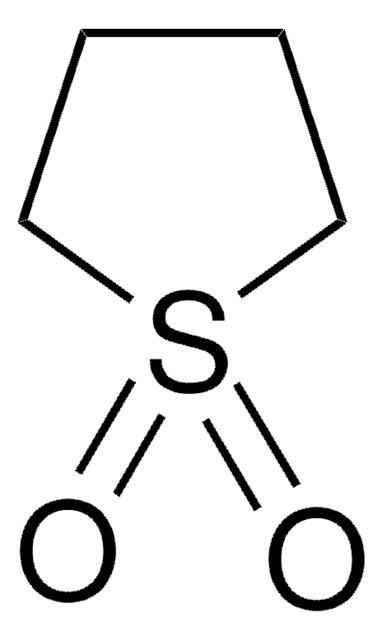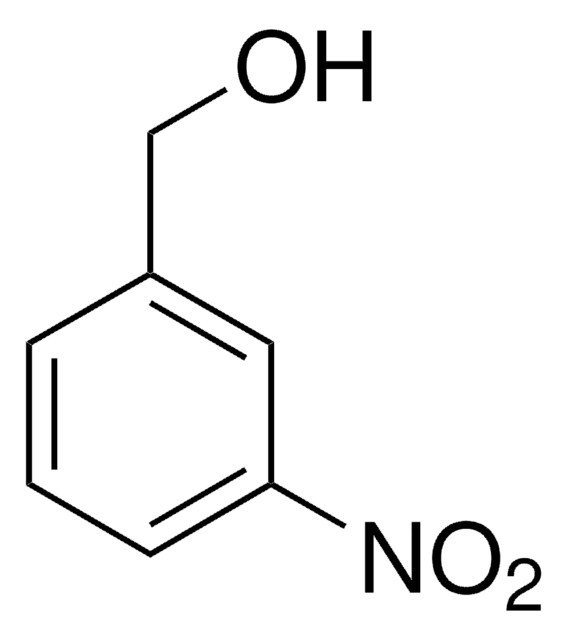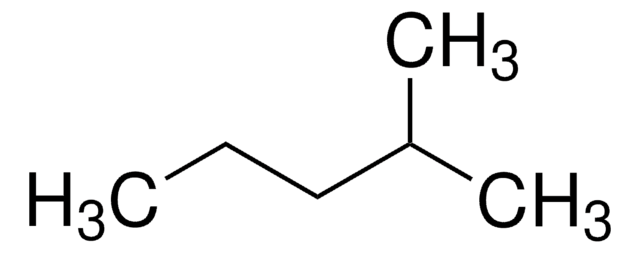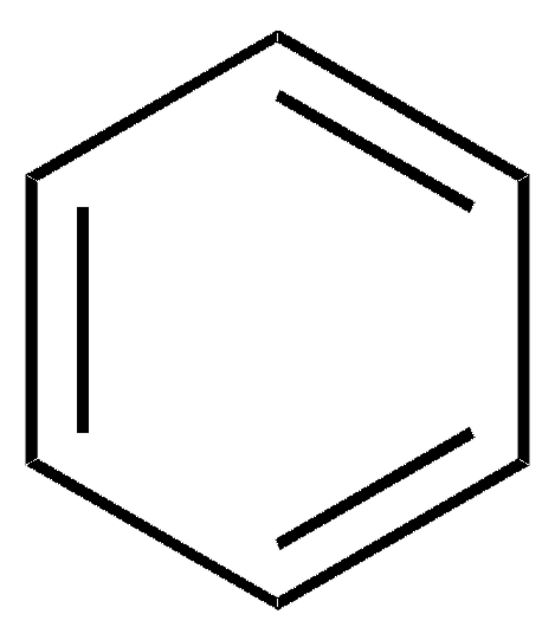Kluczowe dokumenty
88965
Sulfolane
analytical standard
Synonim(y):
Tetrahydrothiophene 1,1-dioxide, Tetramethylene sulfone
About This Item
Polecane produkty
klasa czystości
analytical standard
Poziom jakości
gęstość pary
4.2 (vs air)
ciśnienie pary
0.01 mmHg ( 20 °C)
Próba
≥99.8% (GC)
okres trwałości
limited shelf life, expiry date on the label
metody
HPLC: suitable
gas chromatography (GC): suitable
współczynnik refrakcji
n20/D 1.484 (lit.)
n20/D 1.485
tw
104 °C/0.2 mmHg (lit.)
285 °C (lit.)
mp
20-26 °C (lit.)
gęstość
1.261 g/mL at 25 °C (lit.)
Zastosowanie
environmental
format
neat
ciąg SMILES
O=S1(=O)CCCC1
InChI
1S/C4H8O2S/c5-7(6)3-1-2-4-7/h1-4H2
Klucz InChI
HXJUTPCZVOIRIF-UHFFFAOYSA-N
Szukasz podobnych produktów? Odwiedź Przewodnik dotyczący porównywania produktów
Opis ogólny
Zastosowanie
Hasło ostrzegawcze
Danger
Zwroty wskazujące rodzaj zagrożenia
Zwroty wskazujące środki ostrożności
Klasyfikacja zagrożeń
Acute Tox. 4 Oral - Repr. 1B
Kod klasy składowania
6.1C - Combustible acute toxic Cat.3 / toxic compounds or compounds which causing chronic effects
Klasa zagrożenia wodnego (WGK)
WGK 1
Temperatura zapłonu (°F)
350.6 °F - closed cup
Temperatura zapłonu (°C)
177 °C - closed cup
Środki ochrony indywidualnej
dust mask type N95 (US), Eyeshields, Gloves
Wybierz jedną z najnowszych wersji:
Masz już ten produkt?
Dokumenty związane z niedawno zakupionymi produktami zostały zamieszczone w Bibliotece dokumentów.
Klienci oglądali również te produkty
Protokoły
GC Analysis of Class 2 Residual Solvents on OVI-G43
Nasz zespół naukowców ma doświadczenie we wszystkich obszarach badań, w tym w naukach przyrodniczych, materiałoznawstwie, syntezie chemicznej, chromatografii, analityce i wielu innych dziedzinach.
Skontaktuj się z zespołem ds. pomocy technicznej













